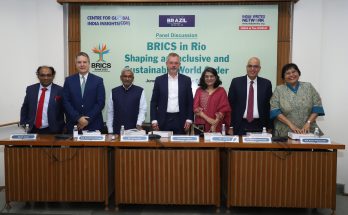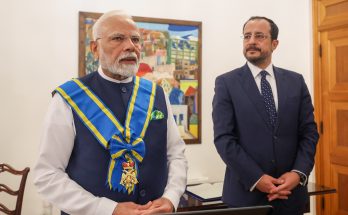 So, should only your folks out West dream of something, and then go out next morning and fulfill their dream at the local departmental store or the Apple place at the corner?
So, should only your folks out West dream of something, and then go out next morning and fulfill their dream at the local departmental store or the Apple place at the corner?
Not any more, say consumer companies setting up shop in the great Indian bazaar of today. There is an alternative tailored only for Indian pockets: smart, affordable buying options.
An iphone? A Samsung tablet? Or, is it a Rado watch your heart yearns for? Go on, get what you want in a way that doesn’t hurt you – or hurts you, a little bit at a time, in ‘easy monthly installments’. Not painful at all!
With its burgeoning middle class, India is fast turning into an EMI nation, and why not! What with global product launches, and social media channels ensuring that word gets out there ‘how great this stuff is’ aspirations of young Indians are skimming the stratosphere. See how there is a sudden spurt in the demand for smart phones, branded sunshades, shoes and clothes, snazzy car models, and all kinds of just-launched gizmos and gadgets. An iPhone does not draw any covetous looks in the Delhi metro today – college students, newly-employed gangly youth and those rough-talking shopkeepers all have one!
Consumer companies, across segments, now have a variety of payment schemes to expand consumer base in the 7th largest consumer market in the world, and build up healthy bottom lines even as the economic pulse dips and dives erratically in developed economies that have been their homeland for decades.
New Delhi-based Sanoj Gupta working as a customer care executive in a multinational company explains. “The exchange offer introduced by Apple has helped me to buy the iPhone which could not have been possible as it costs 45,000. I gave my Black Berry in exchange for an iPhone with a down payment of 20,000 and the rest of the amount to be paid in 15 monthly installments.”
He thinks it is a steal on these terms. So do many others. Consumer companies have their ear to the ground and are quick to drum up schemes suited to small but ambitious Indian-style purses.
The South Korean consumer giant’s local arm Samsung India Electronics Pvt. Ltd has EMI schemes of three, six and twelve months’ duration for smart phones and tablets. The interest-free schemes, that come without a processing fee, are known to boost sales by “significant” margins.
“The EMI offers serve as a good trigger for consumers to upgrade and drive sales of the higher priced models by making them more affordable. We started with credit cards, but now the scheme is available on debit cards also,” explains Asim Warsi, Vice-president, Sales, for mobile business at Samsung India.
“EMI is like the sachet revolution in the FMCG (fast moving consumer goods) category,” said B. Narayanaswamy, consumer insight expert and consultant at Ipsos Research. “It simply extends reach.”
It’s an apt comparison. Sachets is how the vast Indian middle class gets through its daily needs – shampoo sachets, dairy whitener sachets, detergent, instant coffee, face wash, and more things than one can dream of can be bought at the corner store in a sachet, at a fraction of what their kilogram-parents would cost.
According to McKinsey Global institute, “The base of high-spending middle-class consumers is still small. The ‘middle middle’ (spending $4 to $10 a day) and the ‘upper middle’ (spending $10 to $20 a day) together make up just over 50 million people. This group is essentially part of India’s elite, when contrasted with the rest of the population, yet barely middle class by global standards.”
Companies operate according to the purchasing power and per capita income in any market. In India, their challenge is to really understand the market with its cultural nuances, its economic and social inflexion points, and respond accordingly. All multinationals agree that the Indian market is a tough customer – but also, well worth the trouble.
“There is a huge gap between the purchasing power potential of India and its Western counterparts. The gap is not in ambition, quality, awareness or education. The challenge is of affordability. This is where the need for finance schemes comes in, within the reach for the Indian consumer. Being smart phone majors, we understood that this would boost sales for smart phones in India,” admits Asim Warsi of Samsung.
The EMI option allows consumers to be prudent and self-indulgent at the same time, says Adrian Terron, Executive director of Consumer Research at Nielsen India. “Clearly, the household rupee is getting stretched and consumers are getting used to the idea of short-term debt as a way of tackling inflation without sacrificing aspiration”.
Even as the Indian economy slows down on paper, it has become the third largest in terms of purchasing power parity, overtaking Japan. The rapid increase in the consumer base has made credit companies script a comeback in the market.
According to the data compiled by the Credit Information Bureau of India (CIBI), the financial health of average individual borrower has risen. The data reveals that the proportion of borrowers with a credit score of more than 800 points has risen from around 23% in 2008 to over 62% in 2011. That is big. And the key is to reach it in small, easy steps.
Dream big. Pay small. Every month. For many years. But what the heck… the iPad is no longer what the ‘US-wallah-cousin’ can wave in your face with an uppity air. Or indeed, his silver Camry.
Author Profile
- India Writes Network (www.indiawrites.org) is an emerging think tank and a media-publishing company focused on international affairs & the India Story. Centre for Global India Insights is the research arm of India Writes Network. To subscribe to India and the World, write to editor@indiawrites.org. A venture of TGII Media Private Limited, a leading media, publishing and consultancy company, IWN has carved a niche for balanced and exhaustive reporting and analysis of international affairs. Eminent personalities, politicians, diplomats, authors, strategy gurus and news-makers have contributed to India Writes Network, as also “India and the World,” a magazine focused on global affairs.
Latest entries
 India and the WorldJune 26, 2025Operation Sindoor: India Sheds Restraint, Rediscovers Utility of Force
India and the WorldJune 26, 2025Operation Sindoor: India Sheds Restraint, Rediscovers Utility of Force India and the WorldJune 23, 2025BRICS summit in Rio to focus on Global South, local currency trade
India and the WorldJune 23, 2025BRICS summit in Rio to focus on Global South, local currency trade Africa InsightsJune 11, 2025New Opportunities in India-Japan Cooperation in Africa
Africa InsightsJune 11, 2025New Opportunities in India-Japan Cooperation in Africa India and the WorldMay 23, 2025Post-Operation Sindoor, India reminds Turkey, China of concerns and sensitivities
India and the WorldMay 23, 2025Post-Operation Sindoor, India reminds Turkey, China of concerns and sensitivities







